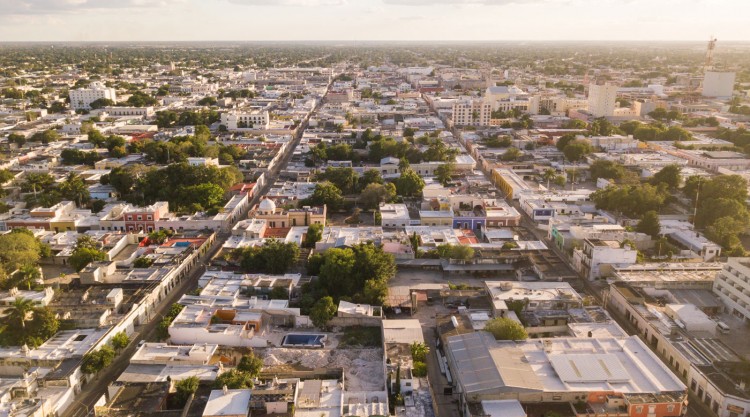CANADIAN IMMIGRATION UPDATES: Applicants to Master’s and Doctoral degrees are not affected by the recently announced cap on study permits. Read more

Sustainable Urban Drainage Systems for the Rescue of the Yucatan Aquifer

Mérida, Yucatán, Mexico
CURE - Merida promotional video 30AUG2020

Edgardo Bolio Arceo (Instituto Municipal de Planeación de Mérida)
Sponsoring institution: The World Resources Institute (WRI)
Background
The increasing expansion of Merida and the subsequent increase in impermeable surface of the territory has led to soil degradation, as well as changes in the hydrological cycle, eliminating natural sources of water purification and infiltration. In addition, conventional infrastructure (grey infrastructure) has been exceeded in capacity and quality to provide service.
Currently Merida has a drainage system based on trenches and storm wells (approximately 100,000) located in the roads with a direct shedding of urban runoff to the aquifer (Image 1). One of the biggest risks of this contamination is that both the aquifer and cenotes are the only sources of water available in the municipality.
The proposal of the Municipal Planning Institute (IMPLAN) of Merida to reduce the amount of pollutants that reach the aquifer while improving urban qualities, is based on the construction of Sustainable Urban Drainage Systems (SUDS) on roads with median strips that have the necessary characteristics to incorporate the system. The potential intervention of a 5,165,801.00 m2 area is being proposed. One of the main challenges facing the city is that there is not enough public budget to execute the project. However, given the impending risk of contamination of the aquifer, it is necessary to accelerate the establishment of mixed financing schemes that enable the municipality to implement the SUDS.
Project focus
Student teams will be asked to focus on building a financial model that allows the government to ensure the resources required to build the 5,165,801 sq-m in a period shorter than 10 years. According to the projections of the Aqueduct Water Risk Atlas, if current state continues the municipality of Merida will, in 10 years, will witness a high level of water stress and in 20 years, an extremely high one. Accordingly, the requirement will be to address the following questions:
- What lessons can be learned from other cities around the world that have undertaken similar green infrastructure projects? How did other cities fund their green infrastructure programs?
- With what other type of green infrastructure and how could the SUDS be combined to enhance its efficiency and improve aquifer conditions?
- What recommendations would you make to the government to achieve the incorporation of avoided costs into the financial model of this project?
- What recommendations would you make to the government to achieve the incorporation of soil management instruments into the financial model of this project?
- What type of financial vehicle do you recommend to achieve the private sector transaction?